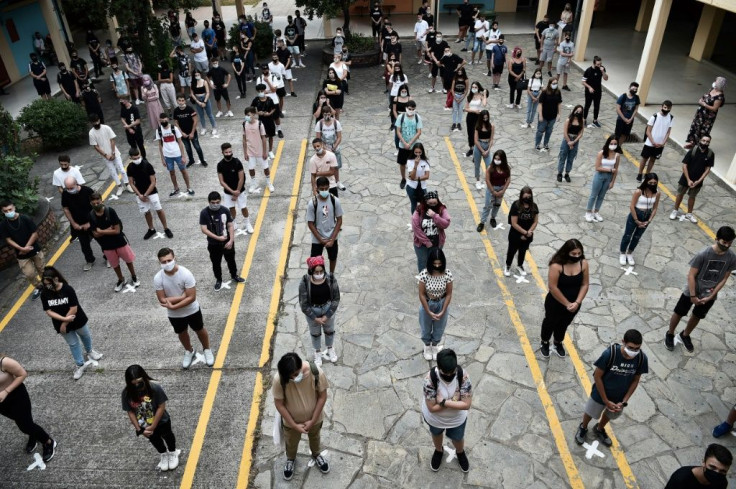New York City Sends First Wave Of Students Back To School, Full Reopening Oct. 1
KEY POINTS
- The first wave of NYC students has returned to in-person classes, with up to 90,000 pre-K and 25,000 special needs children
- Mayor Bill de Blasio has weathered delays and strike threats, resuming classes with more teachers and stronger health guidelines
- Unknown participation rates and strict positive test responses make it unclear how successful the effort will be
New York City sent the first wave of students back to school Monday, reopening classrooms for pre-K students and those with serious disabilities.
The plan to begin in-person teaching has been delayed several times due to staffing shortages and poor planning, but Mayor Bill de Blasio says the whole system will be ready to start the semester in-person by Oct. 1. Doubts remain as to how likely that is.
De Blasio had originally planned to reopen schools on Sept. 11, but the threat of a teacher’s strike prompted further negotiations and delays. The plan now is for a slower, staggered reopening with random testing.
On Sept. 14 de Blasio announced plans to hire 2,000 more teachers, but principals and a report from the city’s independent budget office said as many as 12,000 would be needed.
The greater demand is fueled by a deal between the city and the teacher’s union that wouldn’t force teachers to instruct both remote classes and in-person classes, meaning the city would need to hire more teachers to deal with the pandemic’s increased workload.

The first wave of students consists of up to 90,000 pre-K children, as well as 25,000 children with advanced disabilities, known as District 75. New York City’s schools serve 1.1 million students. For District 75 families, the pandemic lockdown has meant that their children have much more restricted access to developmental professionals.
One of these parents, Esther Wolf, told the New York Times : “I’ve seen a lot of things circulating trying to comfort parents, saying things like, ‘You know, this isn’t going to make or break their future these next few months.’ I totally agree with all of that, but it’s different when you’re thinking about special-needs kids. … My daughter has worked so long and so hard for every single skill she’s learned, and three months could be the difference between her building on new skills and continuing to progress in her development, or spending all of next year trying to regain something that we lost.”
The reopening is paired with enhanced safety guidelines, mandating social distancing and mask use, daily disinfecting of facilities, use only of classrooms with good ventilation, and that students not leave campus during the school day.
There are also strict guidelines around the response to positive tests. Schools would close for the duration of the following investigation. If two or more students are found to be infected, their “classroom” would be closed for two weeks. It’s not clear whether that means the physical location or the possibly infected students. If the school were unable to find a link between the two cases, the whole school would be closed for two weeks.
Still, Mayor de Blasio remains confident he can pull off the reopening.
This year the first day of school is more important than ever. This week 734 buildings are open serving 90,000 students.
— Mayor Eric Adams (@NYCMayor) September 21, 2020
We’re just getting started, and we’re ready to put in the hard work it takes to maintain our progress.#ReturntoSchool2020 pic.twitter.com/bEzBWtpEy0
© Copyright IBTimes 2025. All rights reserved.





















